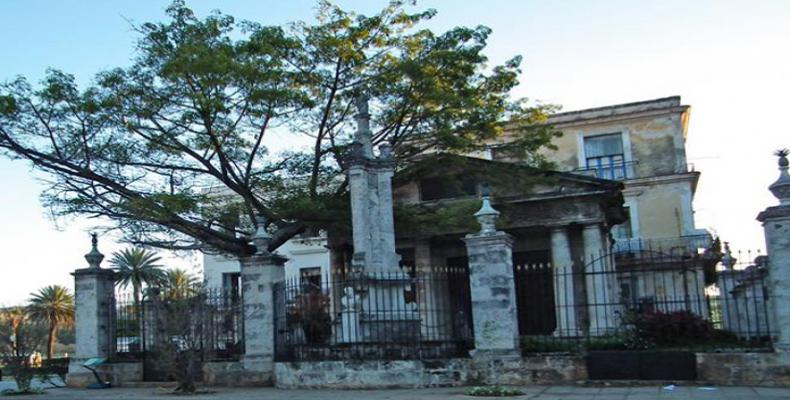Flocks of people come in groups making a lot of noise; others come alone in a quiet pensive mood. Everyone gets in line. Havana is celebrating its 495 birthday and besides a diverse cultural program, the celebration includes a ritual that dates back as far as the cobblestone streets.
Alongside El Templete, a neo-classical monument built in 1828, stands a beautiful and thick silk cotton tree in the place where on November 16, 1519 the city de San Cristobal, currently known as Havana, was founded. The tree was highly revered by the natives who said it had magical-religious powers. People say that both the first religious ceremony –a Catholic mass- and first town council meeting took place under its shade.
Tradition has Havana residents going around the tree three times in silence on the threshold of November 16, touching and hugging it. On each turn they throw coins, some to have their wishes come true, others to express gratitude for a miracle that already happened. Each person in line has faith that their desire will be satisfied. Each November the hope of a country centers on this special place.
A brief history of how the city was founded
The current Havana area and its natural bay were first visited by Europeans during Sebastián de Ocampo’s circumnavigation of the island in 1509. Shortly after, in 1510, the first Spanish colonizers arrived from Hispaniola, the island east of Cuba, known today as Haiti and the Dominican Republic, and the conquest began.
Conqueror Diego Velázquez founded Havana on August 25, 1515, on the southern coast of the island, near the present town of Surgidero de Batabanó. Between 1514 and 1519, the city was located on at least two different areas. All attempts to found a city on Cuba's southern coast failed.
The final location, commemorated by El Templete, was the sixth town founded by the Spaniards on the island, called San Cristóbal de la Habana, the name combines San Cristóbal or Saint Christopher, Havana’s Patron Saint, and Habana, possibly derived from Habaguanex, an Indian chief who controlled the area, as mentioned by Diego Velasquez in his report to the King of Spain.
Havana moved to its current location next to what was then called Puerto de Carenas or Careening Bay in 1519. The quality of this natural bay, which now hosts Havana's harbor, warranted this change of location.
Havana was the last of the first seven towns founded by Diego Velázquez. Old Havana was founded by the Spaniards on November 16, 1519 in the natural harbor of Habana Bay. It became a stopover for the treasure-laden Spanish galleons on the crossing between the New and Old Worlds. On the narrow streets of old Havana stand many buildings, accounting for perhaps as many as one-third of the approximately 3,000 buildings found in Old Havana.
Old Havana was destroyed and burned by French corsair Jacques de Sores, who took over Havana very easily, plundering the city and burning much of it to the ground. After limiting the scarce defenders, De Sores left without getting the enormous wealth that he was hoping to find in Havana. The city remained devastated and set on fire.
Since the incident, the Spanish brought soldiers and started building fortresses and walls to protect the city. El Castillo de la Fuerza or Castle of the Royal Force was the first fortress built, the construction of which started in 1558 supervised by engineer Bartolomé Sanchez.
In 1665 Havana received by Royal Decree the right to use its own shield, including tree small towers, representing the Castle of La Real Fuerza, Morro and La Punta that then defended the city.
Old Havana resembles Cadiz and Tenerife in Spain. Renowned Cuban novelist Alejo Carpentier called it Ciudad de las columnas or City of Pillars, which treasures old monumental buildings, fortresses, convents and churches, palaces, alleys, arcades and human warmth.
The Cuban government has done a lot to preserve and restore Old Havana through the efforts of the Havana City Historian Office directed by Eusebio Leal Spengler.


